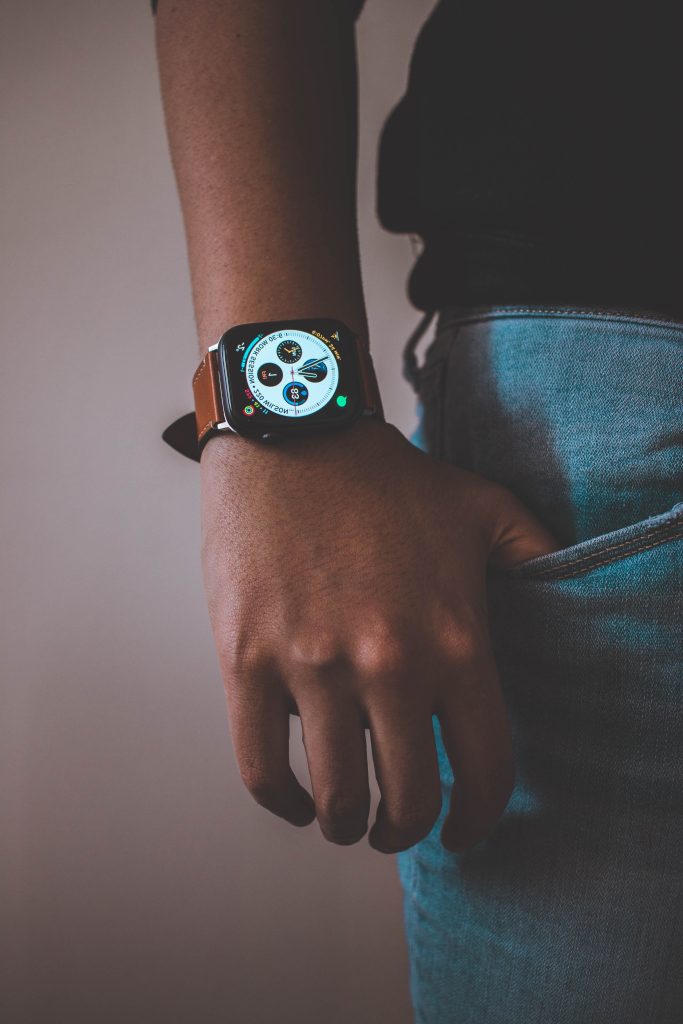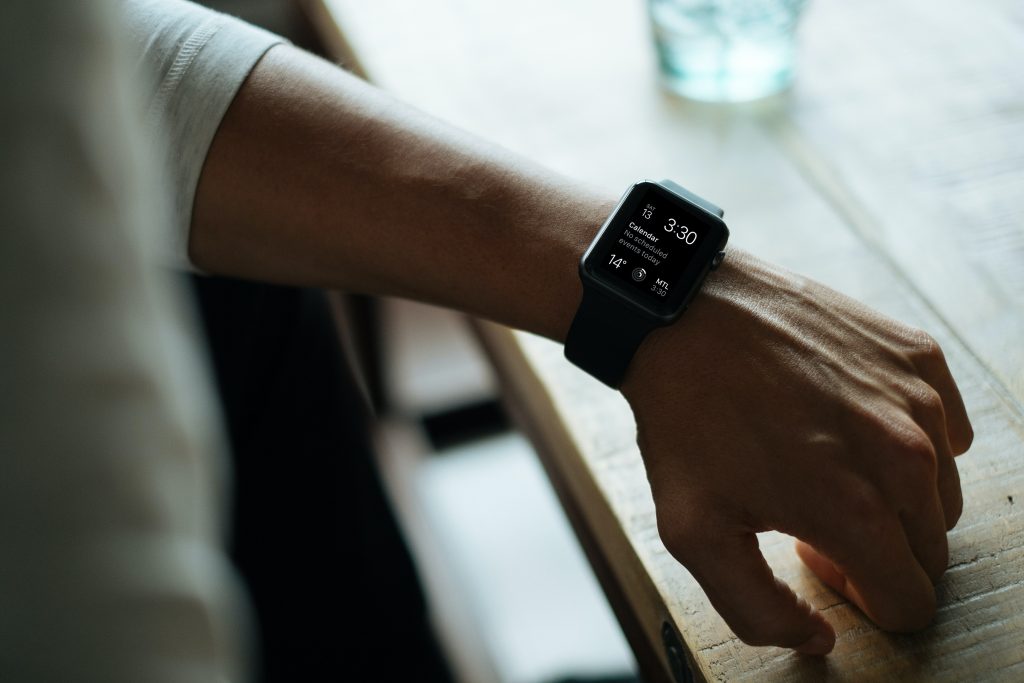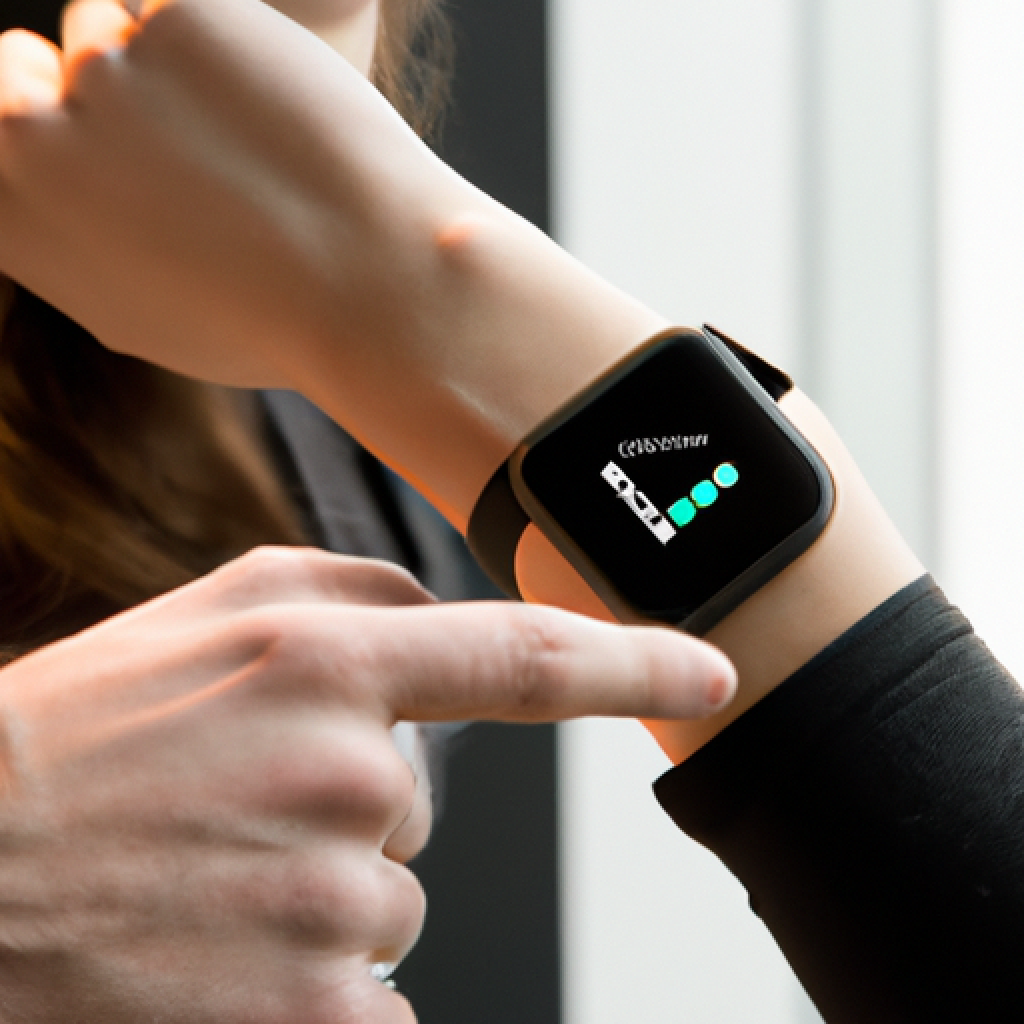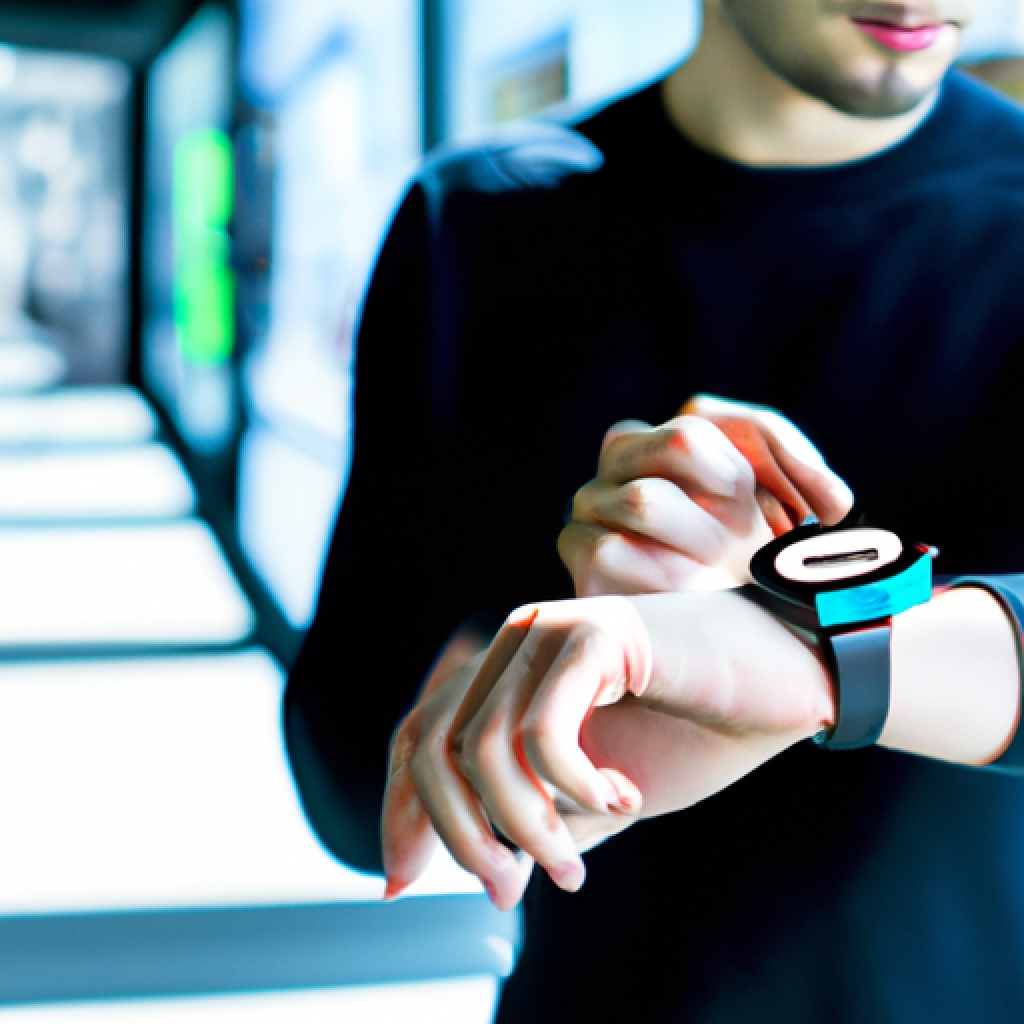What Is The Difference Between A Smartwatch And A Wearable?

I always wondered about the distinction between a smartwatch and a wearable. Are they the same thing, or is there a significant difference? After doing some research, I finally have some answers. While both fall under the category of wearable technology, a smartwatch is a type of wearable device that is specifically designed to be worn on the wrist and typically offers additional features beyond just telling time. On the other hand, a wearable can refer to any type of electronic device that can be worn on the body, such as fitness trackers, smart glasses, or even smart clothing. So, it seems like a smartwatch is a specific type of wearable, but not all wearables are smartwatches. Intriguing, right?
Definition and Types of Smartwatches
Delineating smartwatches
A smartwatch is a type of wearable device that is designed to be worn on the wrist, functioning as a small computer that can be easily carried with you throughout the day. Unlike traditional watches, smartwatches offer a wide range of features and capabilities beyond simply telling the time. These devices are typically equipped with a touchscreen display and can be connected to a smartphone or other devices via Bluetooth or Wi-Fi.
Different types of smartwatches
Smartwatches come in various forms and styles, catering to different user preferences and needs. There are fitness-focused smartwatches that emphasize health and activity tracking, providing features such as heart rate monitoring, step counting, and sleep tracking. On the other hand, there are more general-purpose smartwatches that offer a wider range of functionalities, including phone calls, text messaging, music playback, and app notifications. Some smartwatches are even designed specifically for outdoor activities, offering features like GPS tracking and water resistance.
How smartwatches function
Smartwatches function as an extension of your smartphone or other connected devices, allowing you to view and interact with information on your wrist. They typically run on their own operating systems, such as watchOS for Apple Watches and Wear OS for devices powered by Google. These operating systems enable users to customize watch faces, install and use apps, and perform various tasks directly from their smartwatches. In addition, smartwatches often rely on sensors (e.g., accelerometers, gyroscopes) to track your movements and gather data related to health and fitness.
Definition and Types of Wearables
Defining wearables
Wearables encompass a broader category of devices that can be worn on the body, ranging from smartwatches to fitness bands, smart glasses, smart clothing, and even implantable devices. Unlike traditional accessories or clothing, wearables are equipped with technology that enables them to perform specific functions and collect data. While smartwatches fall under the umbrella of wearables, the term “wearables” is often used to refer to a wider range of devices with different form factors and functionalities.
Various kinds of wearables
Apart from smartwatches, there are several other types of wearables available in the market today. Fitness bands, also known as activity trackers or fitness trackers, are popular wearable devices that primarily focus on health and fitness monitoring. They typically track metrics such as steps taken, distance traveled, calories burned, and sleep patterns. Smart glasses, such as Google Glass, offer augmented reality experiences and hands-free access to information. Smart clothing integrates technology into fabric, providing features like heart rate monitoring or moisture-wicking properties for athletes.
How wearables work
Just like smartwatches, wearables rely on sensors and connectivity to perform their functions. However, the specific workings can vary depending on the type of wearable. Fitness bands, for example, typically use an accelerometer to track movement and a heart rate sensor to monitor the user’s heart rate. These devices then transmit the collected data to a paired smartphone or computer, where it can be analyzed and viewed in more detail. Similarly, smart glasses utilize cameras and displays to overlay digital information onto the user’s view. Wearables also utilize wireless connectivity, usually through Bluetooth or Wi-Fi, to communicate with other devices and synchronize data.

Differences Based on Design Structure and Appearance
Design differences between smartwatches and wearables
One of the key differences between smartwatches and wearables lies in their design structure and appearance. Smartwatches, being wrist-worn devices, are typically designed to resemble traditional watches, featuring a circular or rectangular display mounted on a strap or bracelet. They often come in a variety of materials, such as stainless steel, aluminum, or plastic, to cater to different tastes and budgets.
Wearables, on the other hand, have a more diverse range of designs due to their broader category. Fitness bands, for instance, are usually slim and lightweight, with a utilitarian design that focuses on functionality rather than aesthetics. Smart glasses, while not as common as smartwatches, have a distinct form factor with frames that accommodate miniature displays and built-in cameras. Smart clothing, whether it’s a sports shirt or a pair of fitness leggings, appears indistinguishable from regular clothing but incorporates sensors and conductive fibers to collect data.
Varying size and weight
Smartwatches and wearables also differ in terms of size and weight. Smartwatches, being worn on the wrist, tend to be bulkier than traditional watches due to the additional components and technology packed inside. However, manufacturers have been continuously working to make them slimmer and more lightweight, as user comfort and aesthetics are crucial factors in the adoption of smartwatches.
Wearables, on the other hand, vary significantly in size and weight depending on their specific type. Fitness bands and smart glasses are generally compact and lightweight to ensure ease of use and prolonged wearability. Smart clothing is designed to be lightweight and flexible, integrating technology seamlessly into the fabric without compromising comfort or mobility.
Diverse material and build quality
Smartwatches and wearables are constructed using various materials, each offering different levels of durability and aesthetics. Smartwatches often boast high-quality materials such as stainless steel, aluminum, or ceramic, giving them a premium look and feel. These materials ensure the watch can withstand daily wear and tear, making them suitable for different occasions and environments.
Wearables, particularly fitness bands and smart clothing, are often made from lightweight and sweat-resistant materials to accommodate the active lifestyles of their users. They prioritize functionality and practicality over luxurious materials and aesthetics, making them more suited for sports and fitness activities. Smart glasses, though combining technology and eyewear, are designed with the same quality standards as traditional glasses frames, often made from durable materials like plastic or metal.
Differences Based on Functionality
Functionality of smartwatches
Smartwatches offer a wide range of functionalities that extend beyond timekeeping. They provide users with the ability to send and receive text messages, make phone calls, access social media apps, play music, and even make contactless payments. Additionally, smartwatches often include health and fitness monitoring features, such as heart rate tracking, workout tracking, and sleep analysis. Many models also have built-in GPS, allowing users to track their routes and distances accurately. These functionalities make smartwatches an all-in-one device for communication, productivity, and health-related activities.
Functionality of wearables
The specific functionalities of wearables can vary depending on their type. Fitness bands, as mentioned earlier, are primarily focused on health and fitness tracking. They often provide real-time metrics on steps taken, calories burned, and heart rate, helping users monitor their overall well-being and progress towards their fitness goals. Some fitness bands may also have additional features like guiding workouts, monitoring sleep quality, and reminding users to move after extended periods of inactivity.
Smart glasses, in contrast, offer augmented reality experiences, allowing users to view and interact with digital information overlaid onto the real world. They can display notifications, provide navigation guidance, capture photos and videos, and even offer language translation in real time. The functionalities of smart clothing can vary, with some garments incorporating biofeedback sensors for athletes or integrating heating elements for warmth in cold weather.
Comparison of functions
When comparing the functionalities of smartwatches and wearables, it becomes apparent that smartwatches offer a more extensive range of features overall. While wearables like fitness bands excel in health and fitness tracking, they usually lack the broader communication and productivity features found in smartwatches. On the other hand, smart glasses provide unique augmented reality experiences that are not available in smartwatches. The specific functionalities of wearables largely depend on their intended use, catering to various niches and individual preferences.

Differences Based on Connectivity
Connectivity options in smartwatches
Smartwatches benefit from seamless connectivity with other devices, primarily smartphones. They are typically paired with a smartphone via Bluetooth or Wi-Fi, allowing for the synchronization of notifications, calls, messages, and other data. This integration enables users to interact with their smartphones directly from their smartwatches, often providing quick access to important information without the need to pull out their phones. Some smartwatches also offer cellular connectivity, allowing for independent calling and internet access without relying on a paired smartphone.
Connectivity options in wearables
The connectivity options in wearables vary depending on the type of device. Fitness bands primarily rely on Bluetooth connectivity to pair with smartphones or other devices, enabling the transfer of data and synchronization of health information. Smart glasses typically connect to smartphones wirelessly via Bluetooth or Wi-Fi to provide a seamless flow of information and notifications. Some models may also incorporate cellular connectivity to offer additional functionalities without being tethered to a smartphone.
Comparing connectivity features
When it comes to connectivity features, smartwatches have a more comprehensive range of options compared to most wearables. The ability to pair with smartphones via Bluetooth or Wi-Fi allows for convenient access to a wide range of functions and data, effectively acting as an extension of the smartphone. Smartwatches with cellular connectivity take it a step further, enabling users to make and receive calls, send messages, and access the internet without needing their smartphones nearby.
Wearables like fitness bands, however, are primarily designed to connect to smartphones using Bluetooth. While this connectivity is sufficient for transferring data and receiving notifications, it does not offer the same level of independence as cellular-enabled smartwatches. Smart glasses, on the other hand, benefit from wireless connectivity options to seamlessly connect with smartphones and transmit real-time information.
Differences in Battery Life
Battery life in smartwatches
The battery life of smartwatches can vary greatly depending on factors such as display size, processing power, and the intensity of usage. Generally, smartwatches are designed to last a full day on a single charge, assuming moderate usage. This makes them suitable for most users who can charge their devices overnight. However, battery life can be impacted by features such as continuous heart rate monitoring, GPS usage, and the frequency of notifications. Some smartwatch models offer power-saving modes or improved battery optimizations to extend the usage time between charges.
Battery life in wearables
Battery life is a critical consideration for wearables, particularly those used for fitness tracking and continuous monitoring. Fitness bands are typically optimized for improved battery life, often lasting several days to a week on a single charge. This extended battery longevity is achieved by using low-power components and minimizing the functionalities beyond health and fitness tracking. Smart glasses, due to their compact size and limited space for batteries, generally have shorter battery lives, lasting anywhere from a few hours to a full day, depending on usage.
Comparison of battery longevity
In terms of battery longevity, fitness bands have an advantage over smartwatches and other wearables. Their focus on health and fitness tracking allows for optimized power usage, ensuring that users can rely on them for multiple days without needing to recharge. This extended battery life can be particularly beneficial for individuals who engage in outdoor activities or travel frequently, where access to charging infrastructure might be limited.
Smartwatches, while generally lasting a full day, may require daily charging to ensure consistent usage without running out of battery. Smart glasses, on the other hand, have more limited battery life due to their compact size and the additional computational power required for augmented reality features. Nevertheless, advancements in battery technology and improved power management continue to enhance the battery life of wearables across the board.

Differences in Application and Use Cases
Typical use cases of smartwatches
Smartwatches have a wide range of applications and use cases, making them valuable companions in various aspects of our daily lives. For individuals focused on health and fitness, smartwatches can track exercise progress, monitor heart rate, track sleep quality, and provide personalized workout recommendations. They also act as convenient notification centers, allowing users to stay connected by receiving calls, text messages, social media notifications, and other app alerts directly on their wrists. Additionally, smartwatches can integrate with navigation apps, provide music control, and even make contactless payments using built-in NFC technology.
Typical use cases of wearables
Wearables, beyond smartwatches, offer distinct use cases based on their specific functionalities. Fitness bands excel in health and fitness tracking, providing users with the ability to monitor their daily activity and set goals for steps, calories burned, and sleep quality. These wearables often come with dedicated mobile apps that offer more comprehensive metrics and insights into your health and wellness. Smart glasses, with their augmented reality capabilities, can be used for various professional applications, such as providing real-time information to field service technicians, enhancing productivity in industries like manufacturing and logistics, or enabling immersive experiences in gaming and entertainment.
Contrasting applications
While smartwatches and fitness bands share some overlapping use cases, the unique applications of each become apparent when considering their specific features. Smartwatches offer a more diverse range of functionalities, allowing users to stay connected, track their health metrics, and access a plethora of apps and services from their wrists. On the other hand, fitness bands are tailored for those primarily focused on health and fitness, providing detailed insights and motivation to reach their personal goals. The applications of smart glasses extend beyond personal use, finding utility in professional environments that benefit from augmented reality experiences.
Differences in Operating Systems
Operating systems used in smartwatches
Smartwatches are powered by various operating systems, each with its unique features and ecosystem. The most prominent operating systems for smartwatches include watchOS (Apple), Wear OS (Google), and Tizen (Samsung). These operating systems provide a user-friendly interface for interacting with the smartwatch, offer access to apps through dedicated app stores, and enable customization of watch faces and settings. Each operating system has its strengths and limitations, with differences in compatibility with different smartphone platforms, app availability, and features.
Operating systems used in wearables
The operating systems used in wearables other than smartwatches can vary depending on the manufacturer and type of device. Fitness bands often rely on proprietary operating systems developed by the respective manufacturers, optimized for the specific features and requirements of the device. Smart glasses may use custom or modified versions of operating systems like Android or have their own dedicated software. The diversity in operating systems for wearables reflects the specialized nature of these devices and their specific use cases.
Comparison of operating systems
When comparing the operating systems used in smartwatches and wearables, there is a clear distinction based on the foci and capabilities of the devices. Smartwatches benefit from the mature and feature-rich operating systems like watchOS, Wear OS, and Tizen, which offer a wide range of apps, intuitive interfaces, and deep integration with their respective smartphone platforms. On the other hand, wearables, particularly fitness bands, often leverage simplified operating systems that prioritize health and fitness tracking functions, which may not have the same breadth of compatibility or app availability.

Differences in Price Ranges
Pricing of smartwatches
Smartwatches come with a wide range of price points, depending on factors such as brand, features, materials, and build quality. Entry-level smartwatches can be found for as low as $50, offering basic functionality and limited features. Mid-range smartwatches, with more comprehensive features and better materials, typically range from $150 to $400. High-end smartwatches, often associated with leading brands and offering premium build quality and advanced features, can cost anywhere from $500 to over $1000. The price range of smartwatches reflects the extensive capabilities and the varying degrees of luxury associated with these devices.
Pricing of wearables
The pricing of wearables, excluding smartwatches, varies depending on the type of device and the specific features it offers. Fitness bands, due to their focused functionality, tend to be more affordable, with entry-level bands available for as low as $20 to $50. Higher-end fitness bands with additional features and improved build quality can range from $100 to $300. Smart glasses, being relatively niche devices, come with higher price points, typically ranging from $500 to over $1000, depending on the brand, features, and augmented reality capabilities. The cost of wearable technology reflects the level of innovation and specialized functionality provided by each device type.
Comparing price ranges
When comparing the price ranges of smartwatches and wearables, it becomes evident that wearables, particularly fitness bands, offer more affordable options to users looking for basic health and fitness tracking functionalities. Smartwatches, representing a more comprehensive range of features and capabilities, come with a broader price spectrum, accommodating different budgets and tastes. The higher price points of smartwatches often reflect the integration of advanced technologies, premium materials, and features that are not available in wearables at lower price points.
Choosing Between a Smartwatch and a Wearable
Determining needs and use cases
When making a choice between a smartwatch and a wearable, it is essential to consider your specific needs and use cases. If your primary focus is health and fitness tracking, a fitness band or wearable might be suitable, as they offer targeted functionalities in a more affordable package. On the other hand, if you require a device that combines health tracking, communication, and a broad range of features, a smartwatch would be a more suitable choice.
Evaluating price and affordability
Price and affordability are crucial factors to consider when choosing between a smartwatch and a wearable. It is essential to assess your budget and determine what features and functionalities you are willing to pay for. While smartwatches offer a more extensive range of capabilities, they also come with higher price points. Wearables, particularly fitness bands, can provide a more cost-effective solution, focusing on specific functionalities without compromising on quality.
Considering brand and quality
The brand and build quality of a smartwatch or wearable can have a significant impact on the overall user experience and longevity of the device. Established brands in the smartwatch market, such as Apple, Samsung, and Garmin, offer reliable and feature-rich options backed by strong customer support. Similarly, trusted brands in the wearable market ensure that the devices are built to withstand daily wear and tear, providing a comfortable and durable user experience.
Assessing tech compatibility
Compatibility with your existing devices and ecosystem should also be considered when choosing between a smartwatch and a wearable. Smartwatches, particularly those operating on watchOS or Wear OS, offer seamless integration with respective smartphone platforms, leveraging existing apps and services. Wearables such as fitness bands may have compatibility limitations, primarily focusing on synchronization and compatibility with specific mobile apps and operating systems.
Personal preference and lifestyle considerations
Ultimately, personal preference and lifestyle considerations play a significant role in choosing between a smartwatch and a wearable. Factors such as design, form factor, aesthetics, and comfort should be assessed to ensure that the chosen device aligns with your stylistic preferences and fits seamlessly into your daily routine. Factors like water resistance and durability may also be essential if you lead an active lifestyle or engage in outdoor activities regularly.
In conclusion, the difference between a smartwatch and a wearable goes beyond semantics. While smartwatches are a specific type of wearable, the term “wearables” encompasses a broader array of devices with differing functionalities. Smartwatches provide a comprehensive range of features, connectivity options, and apps, allowing users to access calls, messages, social media, health tracking, and more on their wrists. On the other hand, wearables like fitness bands, smart glasses, and smart clothing offer specialized functions tailored to health tracking, augmented reality, and integration into clothing. When choosing between a smartwatch and a wearable, it is essential to consider factors such as needs, price, brand, compatibility, and personal preferences to find the device that best suits your lifestyle and requirements.








